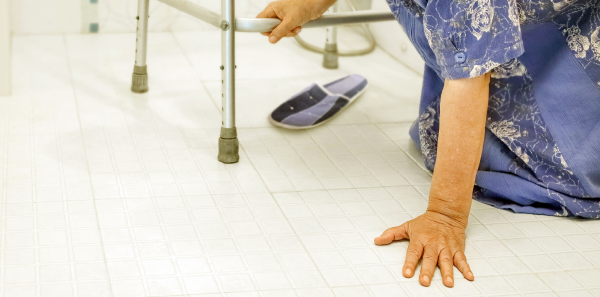
The direction a bathroom door opens can increase or decrease patient falls. When the door opens into the bathroom, the patient becomes crowded into the sink or commode and can fall, so it is best for the restroom door to swing outward. In some new modular designs, the commode folds down from the wall right next to the patient’s bedside so the patient does not travel far. New room designs include a family space to encourage family members to monitor their loved ones for safety.
Explore This Issue
ACEP Now: Vol 37 – No 10 – October 2018The height of furniture, especially beds and toilets, can be tricky. You will often read that these should be low for ill patients, but that is not entirely correct. Research from the Center for Health Design suggests beds and toilets be high so that patients, whose limb girdle muscles are the first to weaken during illness, do not have to lower themselves a long way down to the furniture. On the other hand, lower beds and commodes are associated with less severe injuries when the patient does fall.
A final design change associated with decreasing fall rates is one still not widely popular with nurses: decentralized nurse stations. Clinical units are being designed with work stations scattered throughout the department to allow nurses more opportunity to do paperwork while observing patients. Decentralization offers other advantages, too, including decreased noise levels, which is critical to patient satisfaction, and decreased amounts of walking for nurses who have to work from multiple sites.
The Potential
How much can these kinds of process and design changes reduce falls? The Center for Health Design estimates design changes alone can reduce patient falls by as much as 17 percent. Methodist Hospital in Indianapolis, Indiana, ramped up its fall-reduction program with rigorous procedures and design changes that included a family space in every patient room and decentralized nurse stations. These efforts resulted in a reduction of patient falls from six per 1,000 patients to two per 1,000 patients in a cardiac care unit.2
As many emergency departments consider adding geriatric service lines to their departments, the issue seems even more relevant than in the past. Shouldn’t we apply some of these strategies in the emergency department?
References
- Chang JT, Morton SC, Rubenstein LZ, et al. Interventions for the prevention of falls in older adults: Systematic review and meta-analysis of randomized clinical trials. BMJ. 2004 Mar 20;328(7441):680.
- Hednrich A, Fay J, Sorrells A. Courage to heal: comprehensive cardiac critical care. Healthcare Design website. Accessed September 26, 2018.
Pages: 1 2 3 | Single Page





No Responses to “Tips for Reducing Falls in Your ED Via Process and Design Changes”